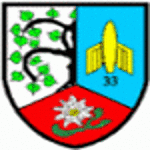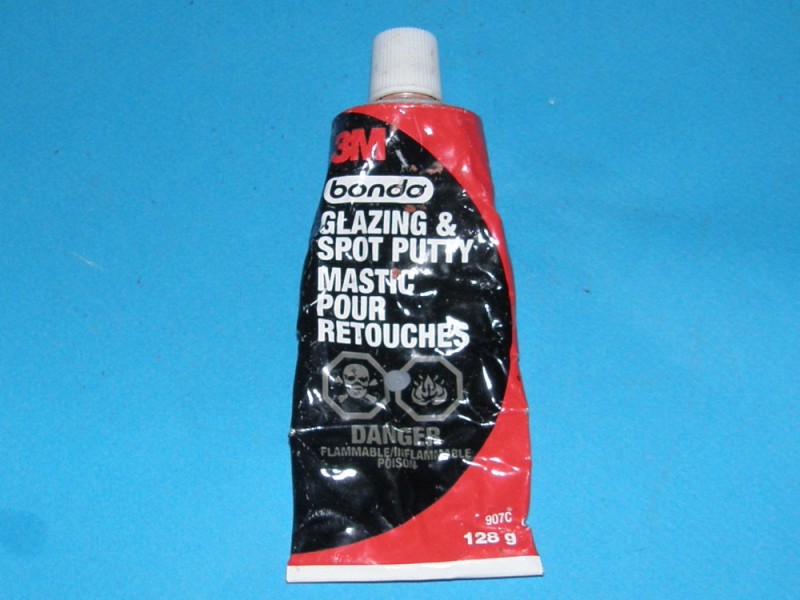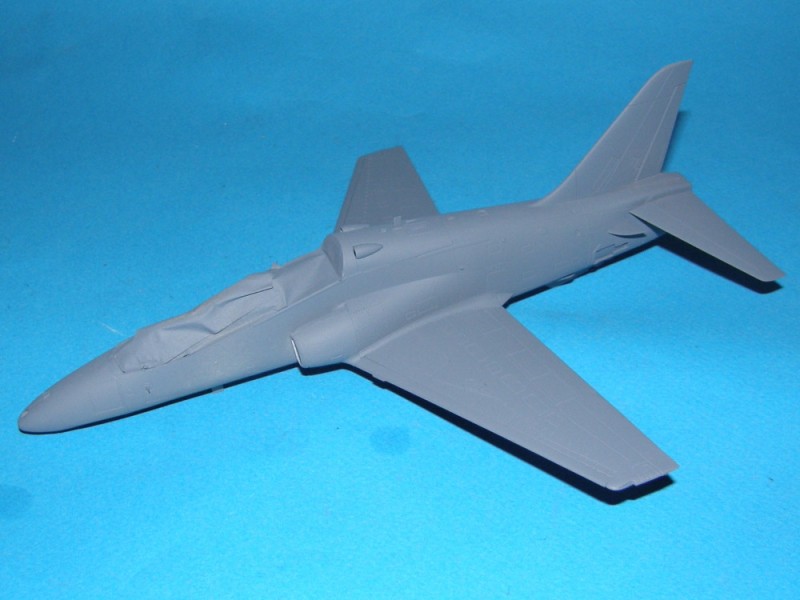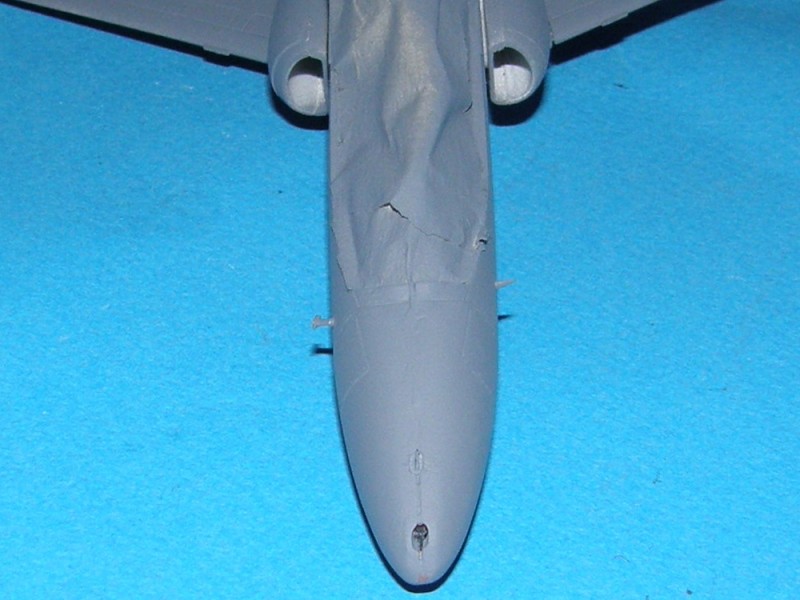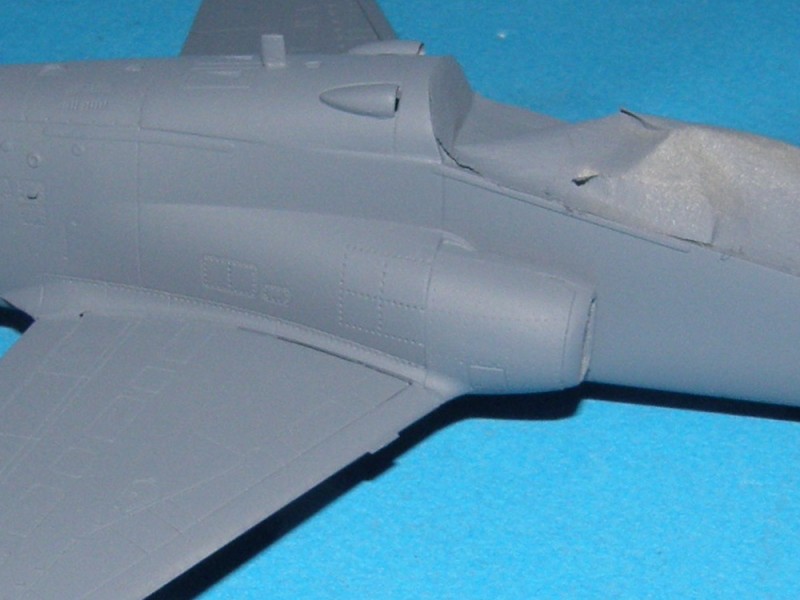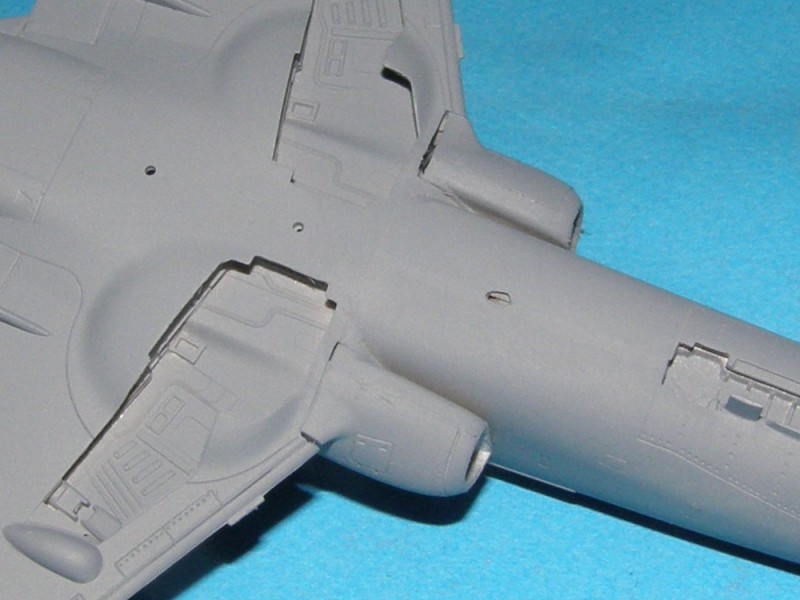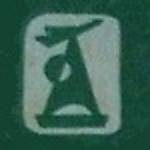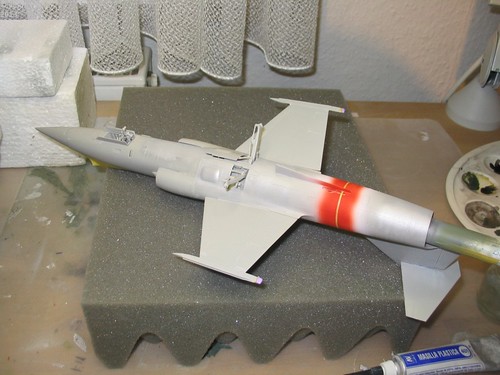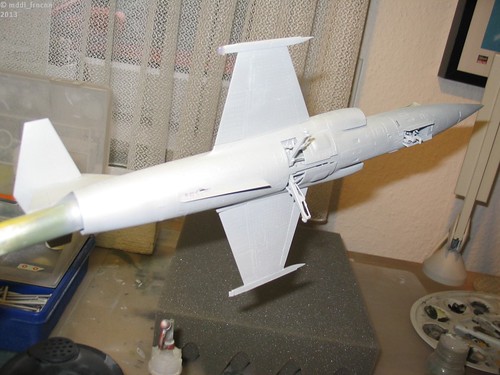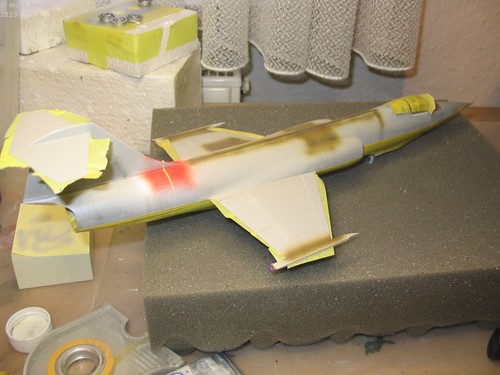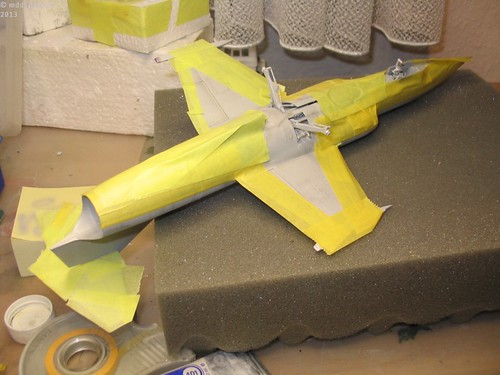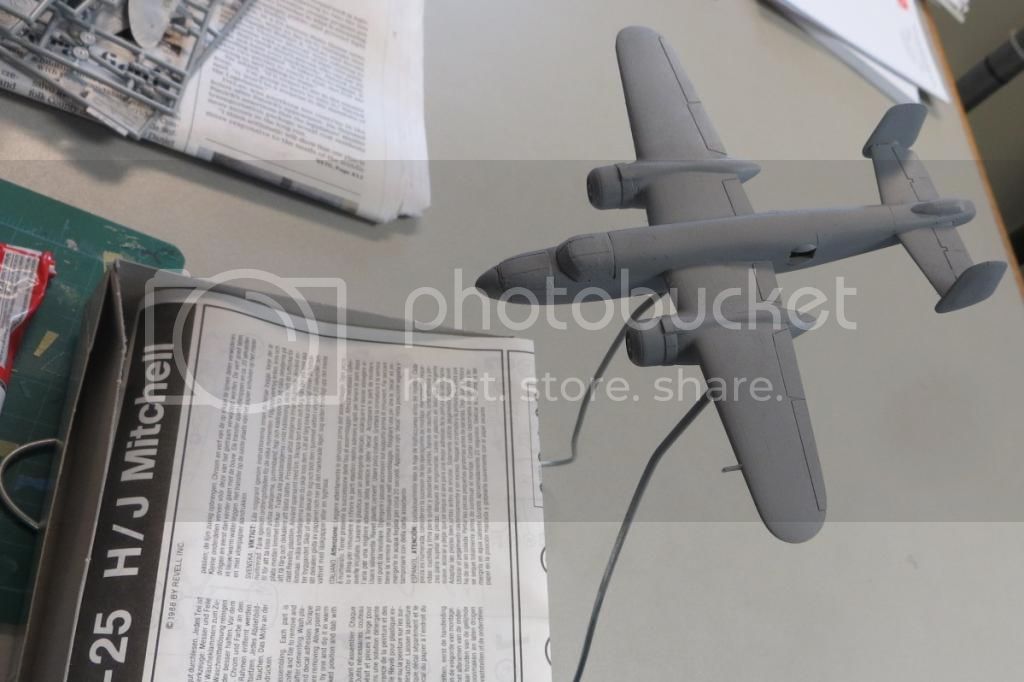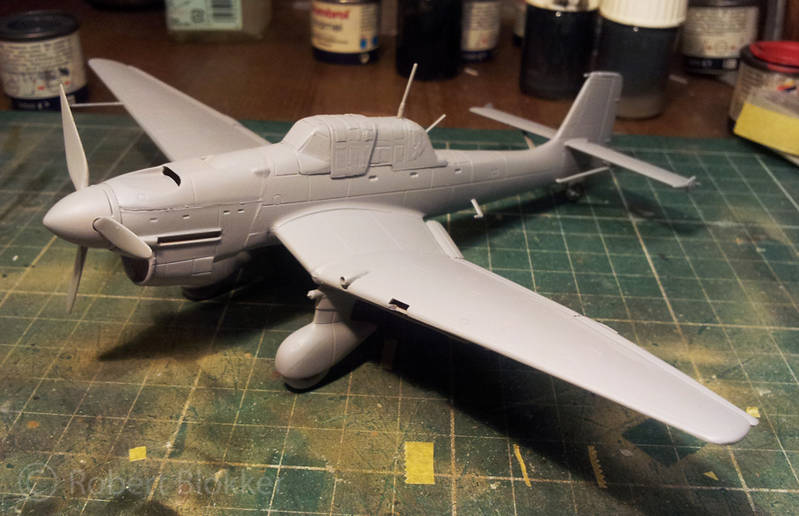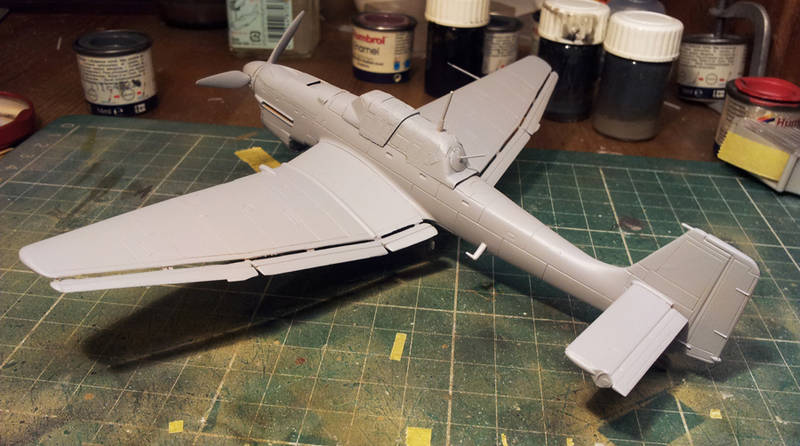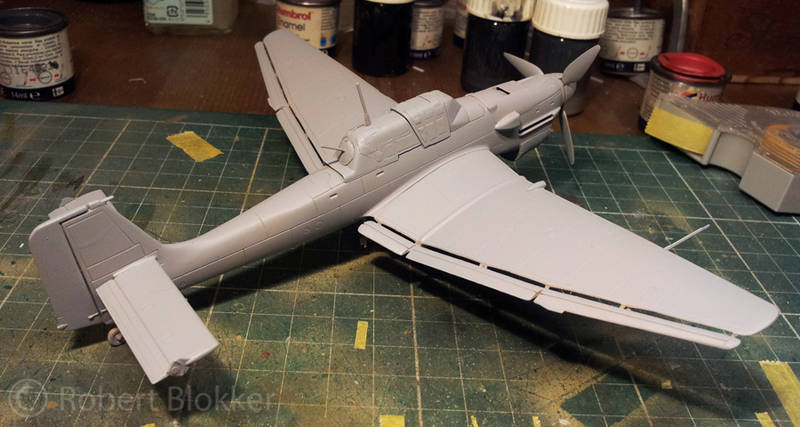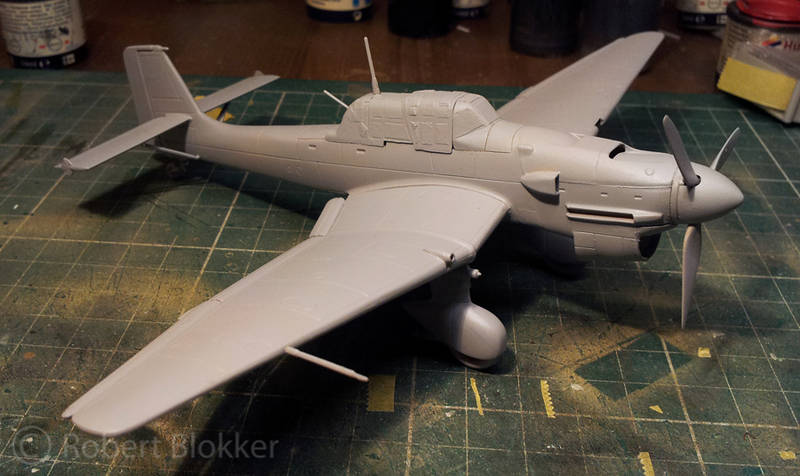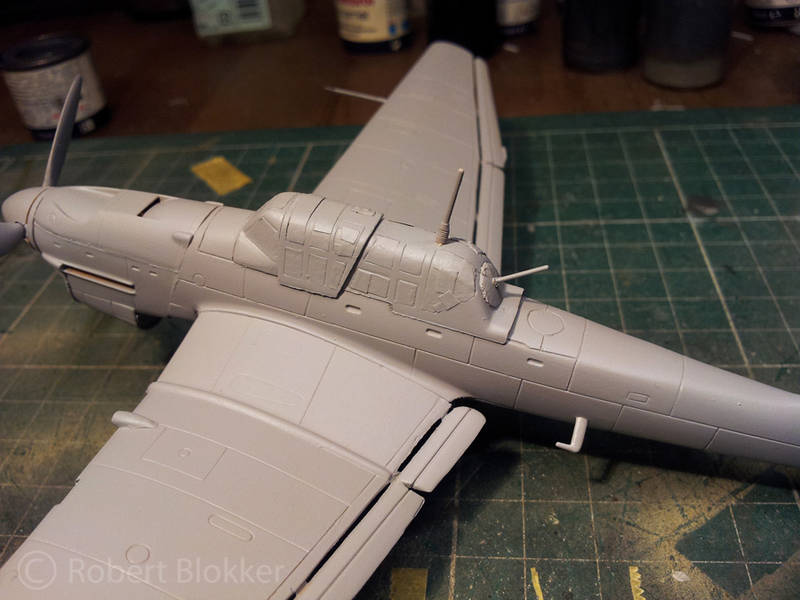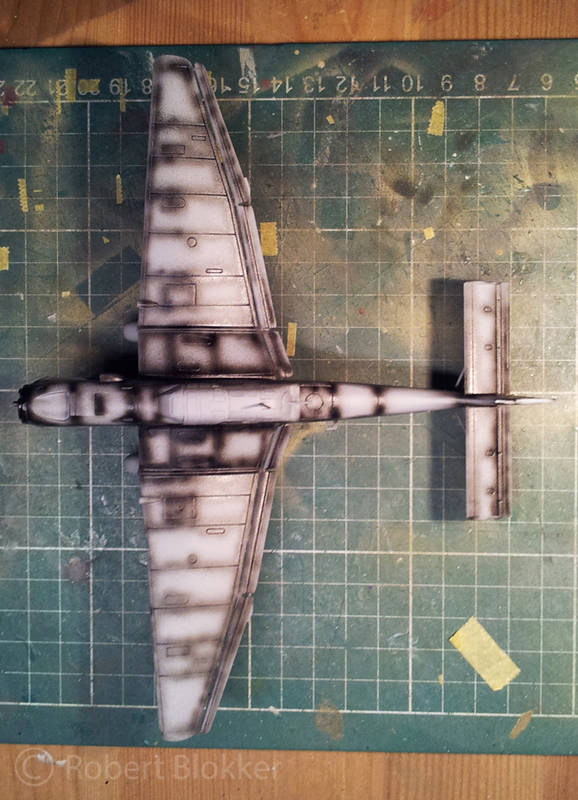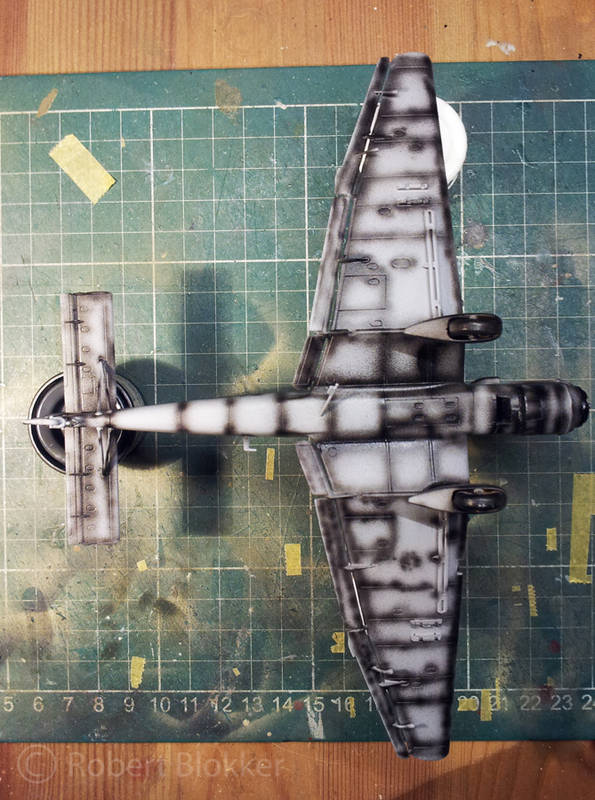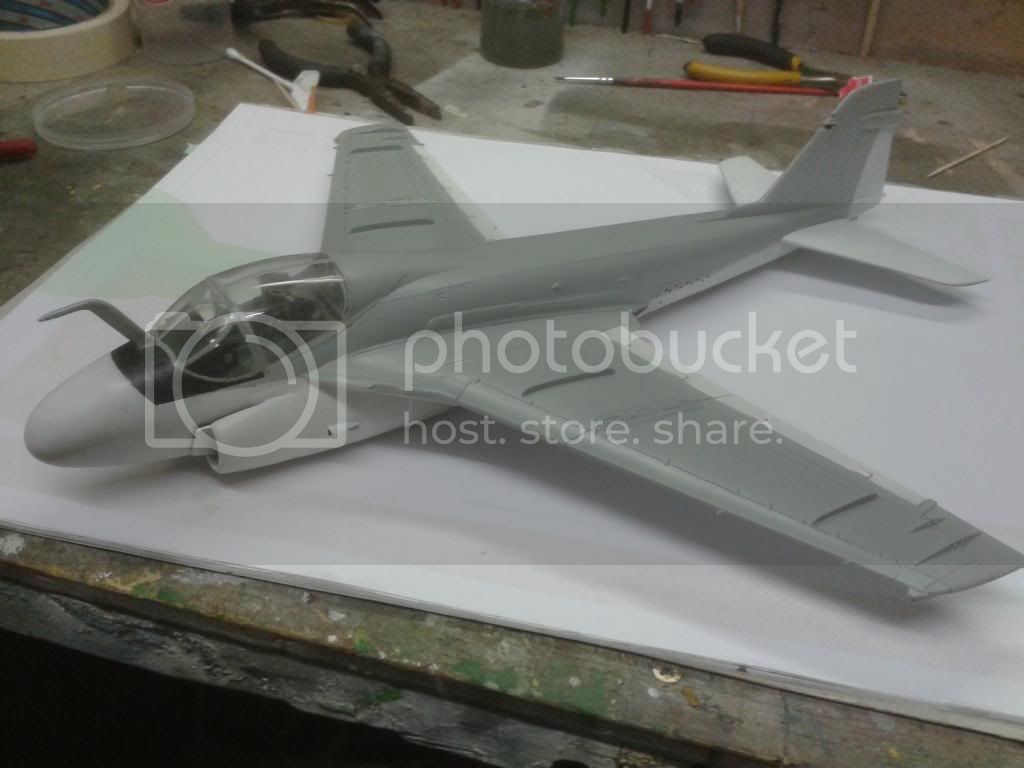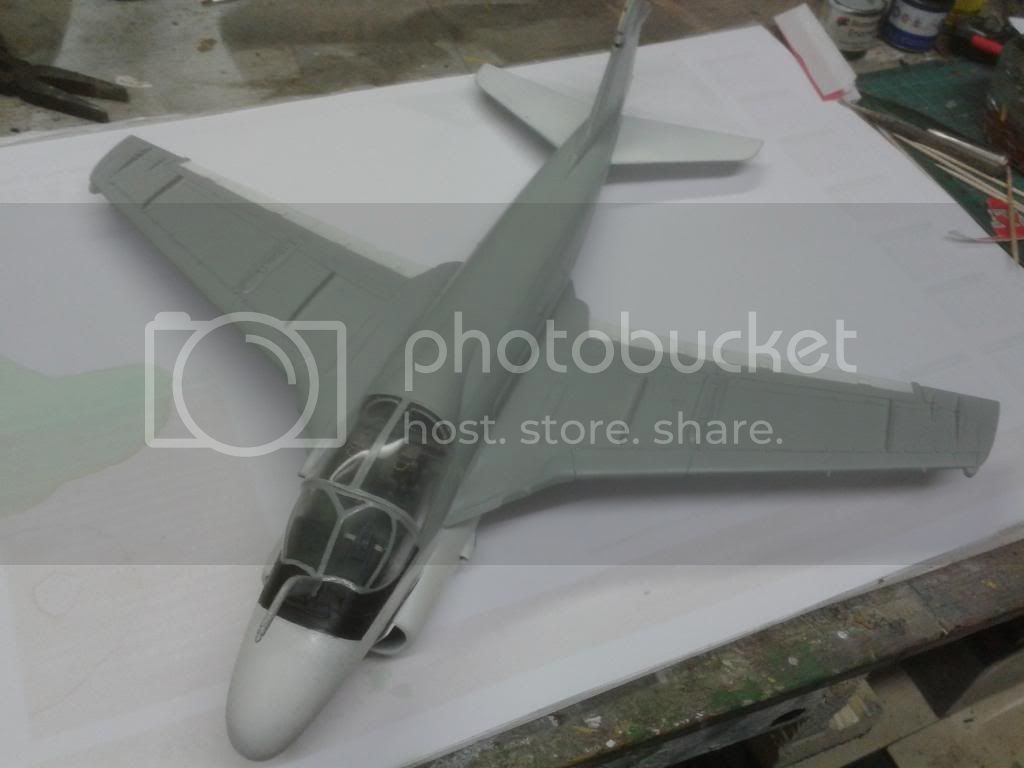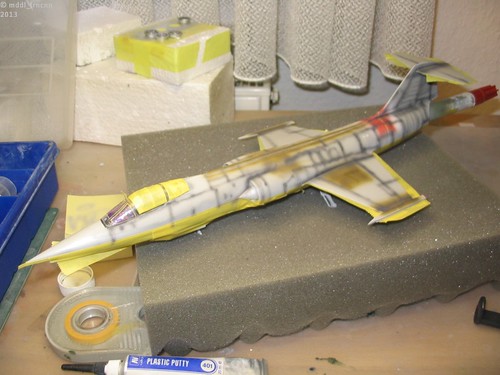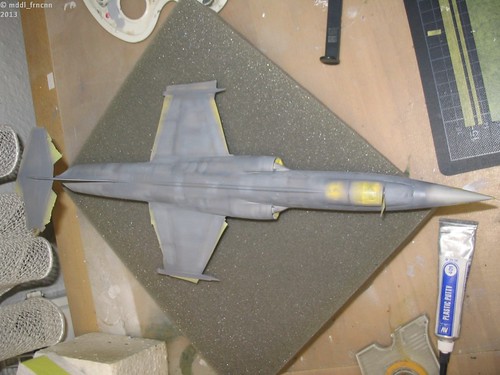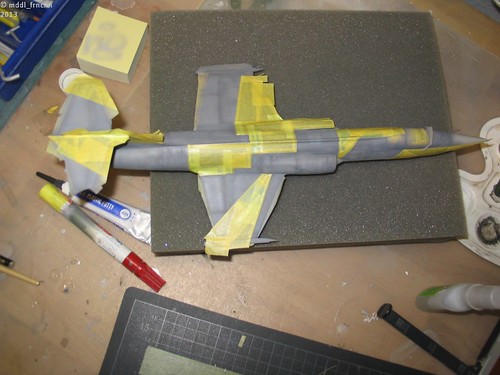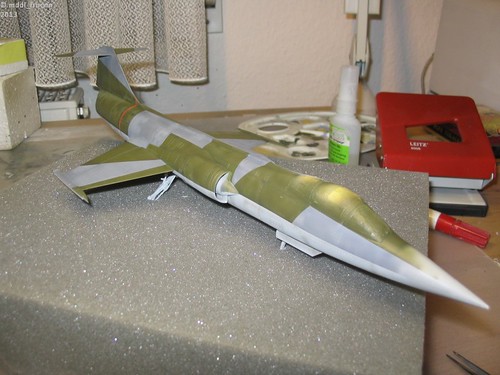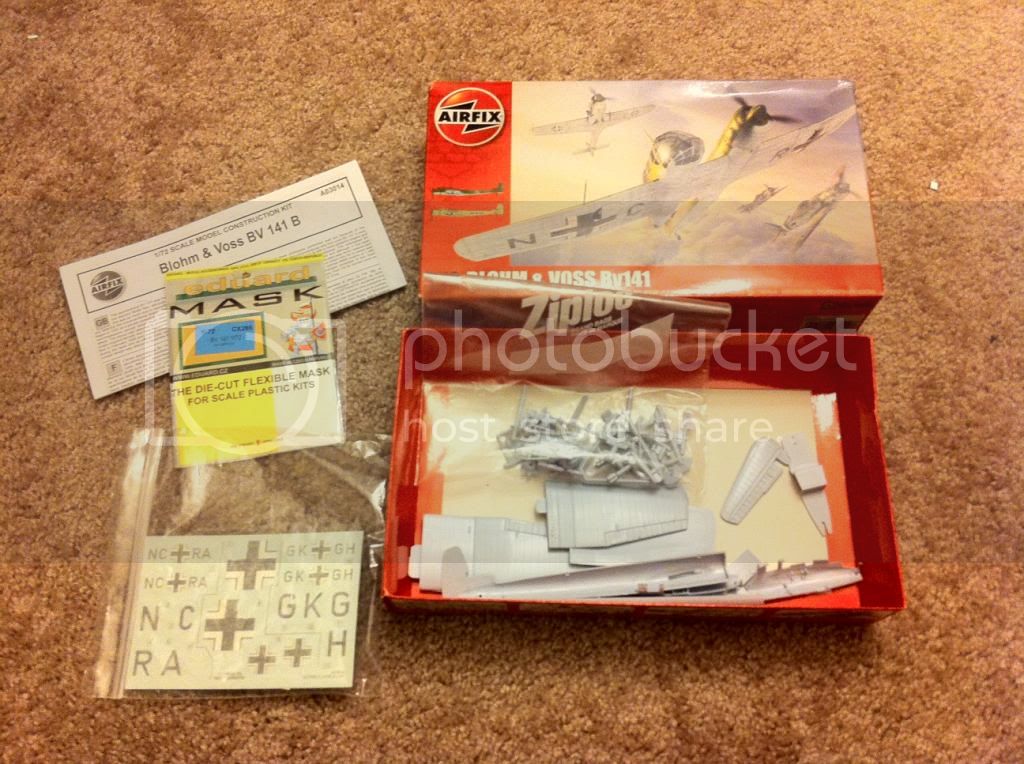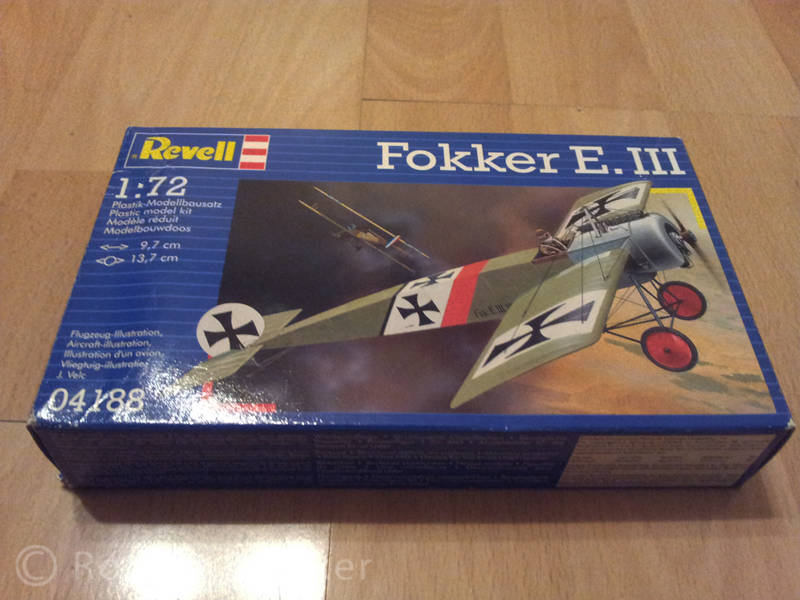@ Dave: great progress on your A-6!
@ Jessie: the reddish substance you use for putty, what is this? Bondo putty?
@ Robert: the interior of your Stuka looks good! Hardto belive that it is 1:72!
Glueing the fuselage starts.
This time I tried to use Superglue and accelerator (Kicker) whereever possible to speed up building. The advantages of the superglue:
+ dries rock-hard, easy to rescribe
+ thanks to the kicker you can immediately sand the surface
+ no problems with ghost seams
On the other side the disadvantages:
- the seam is not so resistant against pressure, this means it cracks more easily if you press too hard for example during excessive sanding. To avoid this, I try to use thin plastic cement from the inner side of the fuselage or at places where you can not see anything.
By the way, I use Zap-A-Gap products. One very thin and a thicker superglue.
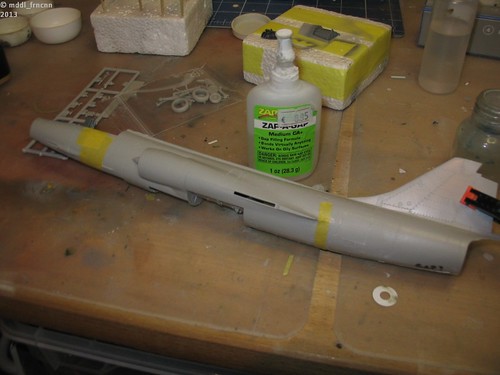
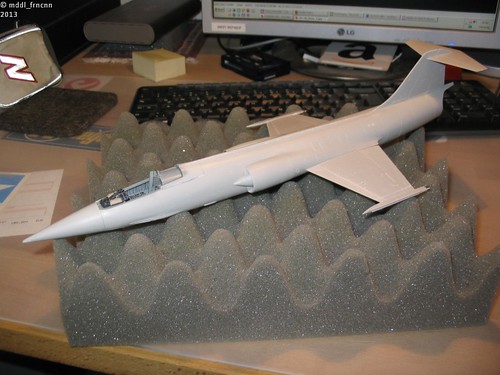
After having the main parts glued together the paint job starts. The Luftwaffe F-104Gs have a red line on the rear fuselage which warns before jet exhaust. As it is easy to paint I just brush the area red and cover it with a thin line cut from masking tape.
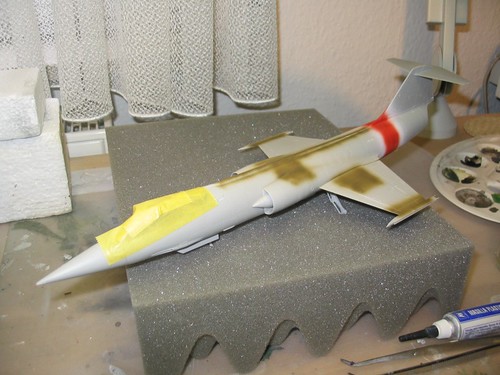
Regards,
Sebastian




